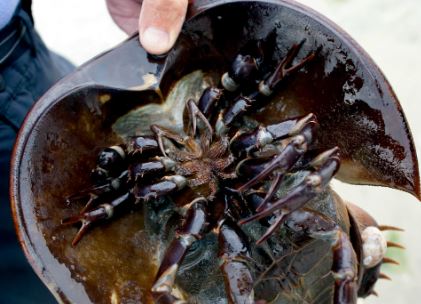
Medical microbiology and immunology professor Nancy Keller of the University of Wisconsin-Madison recounts how when bacterial wilt species Ralstonia solanacearum tries to infect the fungus Fusarium fujikuroi, another pathogen; the latter retaliates by releasing antibacterial compounds that discourage its invader.
It isn't a case of two unfamiliar species meeting each other for the first time either. Both of them cause wilt disease in plants and in certain cases, even occupy the same host, as in the case of tomato plants. If anything, it is proof that microorganisms in the soil are anything but passive – they actively interact with each other in meetings which, at times, get ugly.
Keller has been studying the world of soil pathogens for years now, an interest that began when spores from a fungus in her lab landed on a petri dish containing bacteria in a neighboring lab. As some students noted at the time, the two microorganisms began to interact, and even compete, with each other. Today, she looks into what happens in chance encounters between fungi and bacteria.
In 2016, her lab published findings relating how the presence of Ralstonia bacteria induces fungi in its vicinity to produce chlamydospores. These are hardy structures that also function as spores. They are produced to ensure the survival of the fungus through stressful situations, such as intense heat or cold. The bacteria takes advantage of this response by invading the spore, most likely to ensure its own survival through winter.
This process is an active endeavor on the part of Ralstonia, which releases chemicals that trigger the response in the first place. However, fungi species like Fusarium have become smarter, too. Researchers noticed that chlamydospores in Fusarium have changed into a deep red color. They were able to identify the source of the coloration as the compound bikaverin, a substance with antibacterial properties. (Related: Even bacteria use weapons of self-defense: Tiny daggers slice amoeba when they try to attack.)
Bikaverin, it turned out, was just one of the antibacterial cocktail that Fusarium releases to protect itself and its spores from an invasion by Ralstonia. When researchers impaired the fungus' ability to produce bikaverin, the bacteria had better success at infecting Fusarium.
The compound bikaverin is produced as a defensive response by not just Fusarium. An unrelated plant pathogen species, Botrytis cinerea, also produces the chemical – an ability that scientists believe Botrytis obtained from Fusarium in an ancient genetic transfer.
Under normal circumstances, the two species of fungi produce the red compound under different conditions, for example, differences in the nutritional content of the soil. However, when exposed to the chemical substance that triggered the production of chlamydospores in Fusarium, Botrytis followed suit and also began producing bikaverin.
For Keller and her colleagues, these interactions prove that the soil is home to organisms that are striving to survive and in the process, make use of chemical signals to communicate with each other. The messages, she believes, are for scientists to decipher.
“How these microbes interact and talk with each other is still in its infancy," she says. "We really don't know how they talk to each other. And that's where we want to go in our lab."
Learn how bacteria and fungi interact with one another at Ecology.news.
Sources include:
Please contact us for more information.























